Dr. McGrail's Lip Exercises
Dr. Simon McGrail, the surgeon who successfully operated on my torn orbicularis oris (or lip muscle, for you newcomers), has developed a set of exercises to strengthen damaged and weakened lip muscles. There has been considerable interest in these lip exercises, especially among trumpet players, so I gave Dr. McGrail a call a few months back and asked if I could share them with you. He said “Yes, they’re for anyone who can use them,” so here they are! If you have questions, please contact me using the link above and I’ll get right back to you. It is easy to do these exercises incorrectly, and I did them incorrectly for months before getting it right (especially #4). I hope this post helps other players get things right the first time. Speaking of getting things right, Dr. McGrail himself often refers injured players to Brad Goode for help with the exercises, and Brad was a great help to me in terms of learning the mechanics of the exercises. Dr. McGrail’s lip exercises (verbatim from the good doctor):
- Loosen the lips by rolling air around the mouth for a minute or so.
- Form an embouchure, and direct all the muscles toward the center of the aperture. Hold for five seconds, and repeat three times.
- With the teeth slightly apart, as is usually the case naturally, do an extended smile, stretching both corners of the mouth sideways. Hold for five seconds, and repeat three times.
- With a small rolled up gauze, or a plegette, such as dentists use, place this between the upper lip and upper gum. Try to push the gauze through the gum by pressing the lip backward. Hold for 5 seconds, and repeat three times.
Regarding the above 1, 2, 3, 4 as one set, the set should be repeated five times twice a day.
Okay, let’s go through these exercises one by one and see what they look like in practice. Sorry for the extreme close-ups, but hey, at least I moisturize.
1. Loosen the lips by rolling air around the mouth for a minute or so.
Nothing too complicated here. Just seal your lips and push the air in your mouth around to give everything a good stretch. 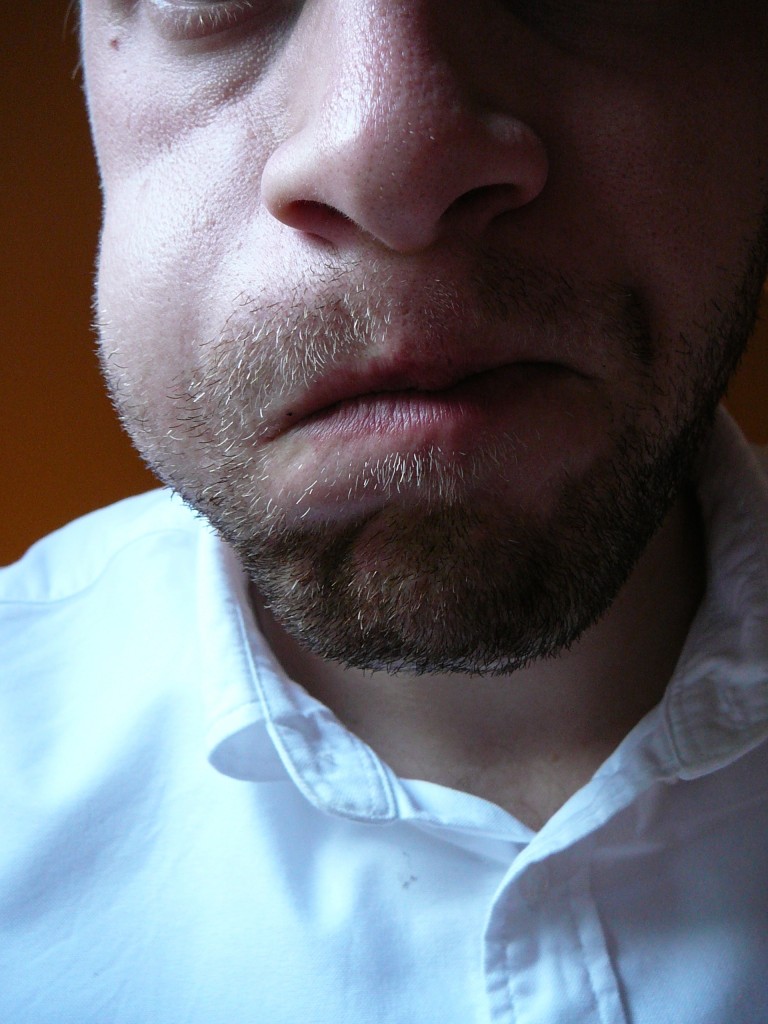
2. Form an embouchure, and direct all the muscles toward the center of the aperture. Hold for five seconds, and repeat three times.
The key to this exercise is to form a much firmer embouchure than one uses when actually playing the trumpet. We’re trying to give the muscles a good workout here, so put ‘em to work! 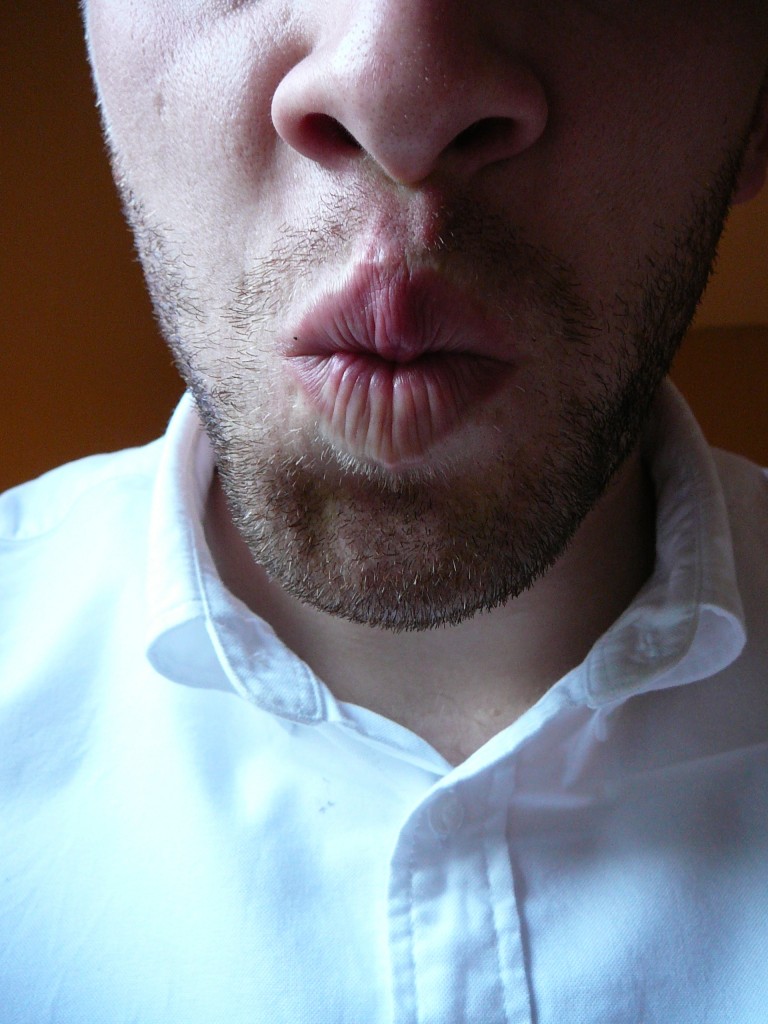
3. With the teeth slightly apart, as is usually the case naturally, do an extended smile, stretching both corners of the mouth sideways. Hold for five seconds, and repeat three times.
Cue the creepy smiles! This exercise stretches the muscle instead of contracting it, and the key is to smile as wide as possible. I used to do these exercises in the car on the way to work, and I’m sure I freaked some people out with this one. 
4. With a small rolled up gauze, or a plegette, such as dentists use, place this between the upper lip and upper gum. Try to push the gauze through the gum by pressing the lip backward. Hold for 5 seconds, and repeat three times.
This is the big one. Dr. McGrail says this exercise is the most important of the four, and it’s certainly the most strenuous. It’s also the easiest to do incorrectly. But don’t worry, I’ll walk you through it. I find that 2 inch square gauze works best for this exercise, and you can find this stuff at any drugstore. Wash your hands, kids, then fold the gauze in half once.
Wash your hands, kids, then fold the gauze in half once. 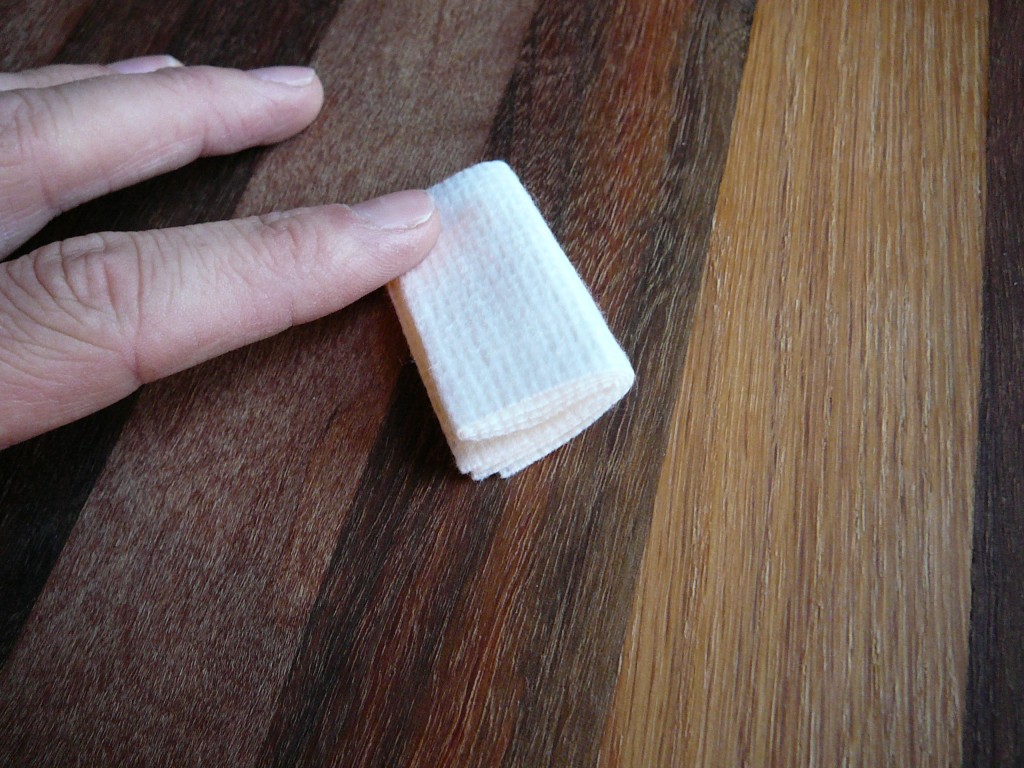 Now fold it a second time:
Now fold it a second time: 
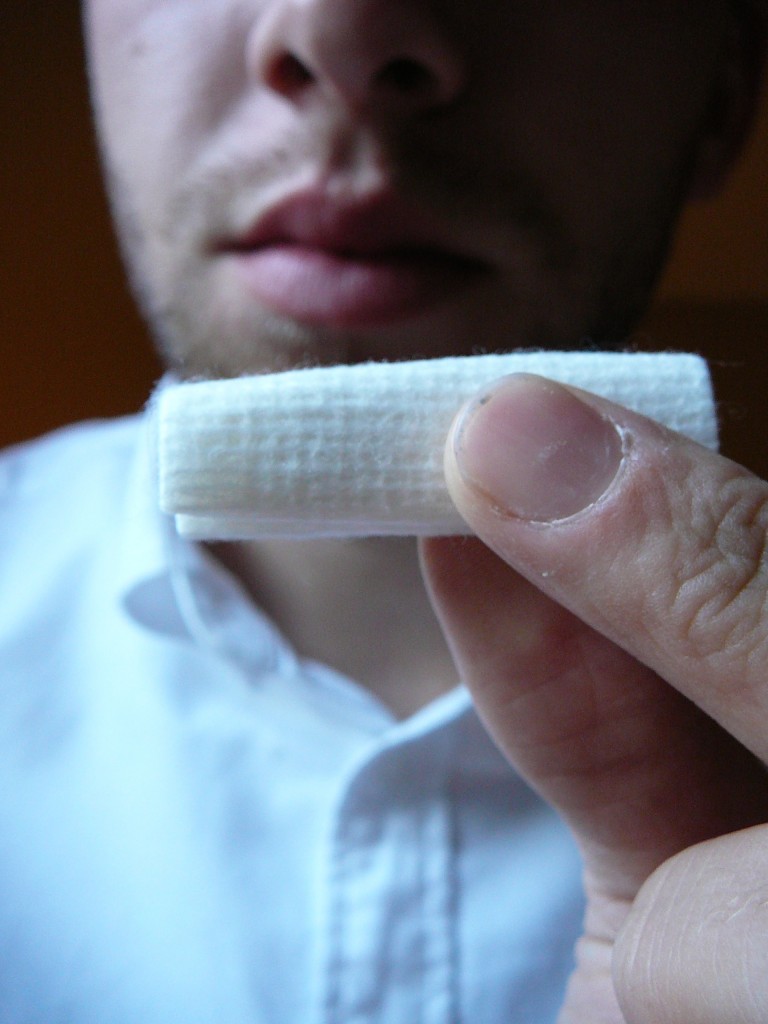 Put the folded-up gauze between your upper lip and gum. Don’t be shy - get in it there real good.
Put the folded-up gauze between your upper lip and gum. Don’t be shy - get in it there real good. 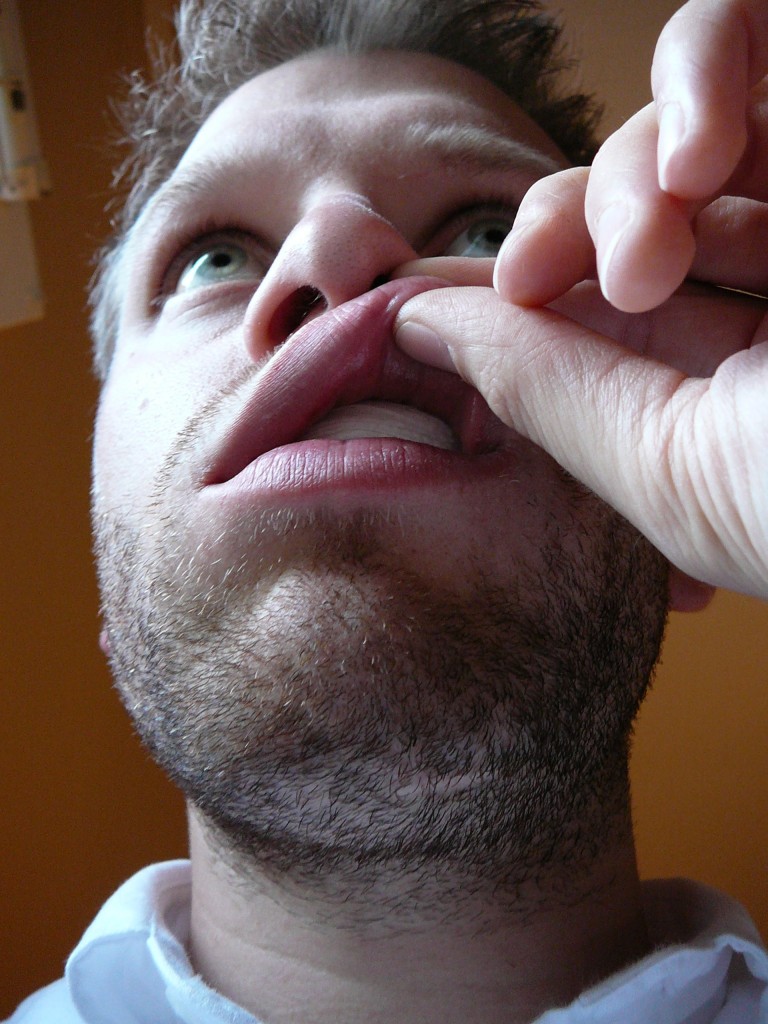 Now here’s what you have to remember: we’re trying to engage the muscle of the upper lip as much as possible. So when Dr. McGrail says to “try to push the gauze through the gum by pressing the lip backward,” make sure you are not just using the corners of the mouth to pull the top lip back against the gauze. Instead, think of curling the top lip down and back against the gauze. You should “feel the burn” in the muscle tissue between your nose and the red skin of the top lip.
Now here’s what you have to remember: we’re trying to engage the muscle of the upper lip as much as possible. So when Dr. McGrail says to “try to push the gauze through the gum by pressing the lip backward,” make sure you are not just using the corners of the mouth to pull the top lip back against the gauze. Instead, think of curling the top lip down and back against the gauze. You should “feel the burn” in the muscle tissue between your nose and the red skin of the top lip. 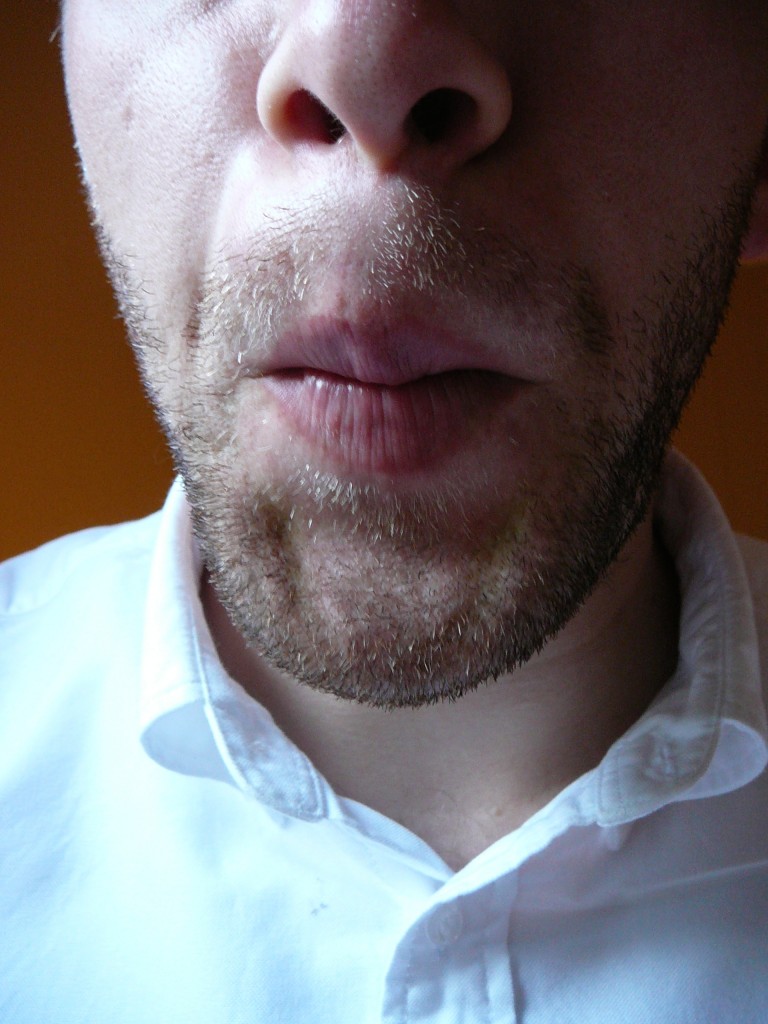
Regarding the above 1, 2, 3, 4 as one set, the set should be repeated five times twice a day.
If you’re doing everything as Dr. McGrail outlines, you’re looking at two sessions per day of 10-15 minutes each. I found it most useful to do the first session after my morning warmup and the second session before going to bed. Here’s the thing you have to keep in mind with these exercises, though:
If you’re doing them right, they’re exhausting.
Plan accordingly. Lastly, the most common question I’m asked regarding these exercises is, “Will these exercises help a healthy trumpet player develop more strength and endurance?” I am not a medical professional, but my experience has been that these exercises are most useful as physical therapy for restoring muscle tone in a stretched or surgically repaired torn lip muscle. Similarly, if you’ve experienced a knee injury, your physical therapist might have assigned you exercises that strengthened your weakened knee but would not do much for a healthy person. Once my lip felt more or less normal in terms of muscle tone and strength, I noticed that doing the exercises just tired me out without conferring increased strength and endurance. They had done their job, and it was time to stop doing them and focus on playing. There you have it! Please leave a comment if this post interested you, and take care of your chops!
